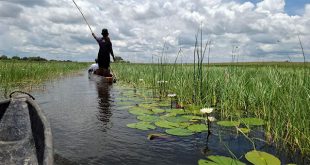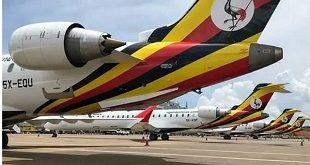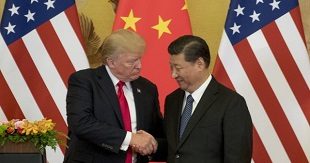
By Ron Atinkson
In this second part of our commentary revisiting Operation Lightning Thunder in Garamba, DR Congo, Ronald R. Atkinson tells the untold story of UPDF-LRA clashes, deaths and survival in the jungles.
A month after Operation Lightning Thunder began, in mid-January, I began hearing accounts of what was happening in the DRC from a number of people in different parts of northern Uganda, including the West Nile. While UPDF accounts were indicating only a few encounters with the rebels, these accounts told of numerous engagements and sometimes heavy fighting between the UPDF and rebel forces.
I was also given information by a number of informed sources that its essentials tallied well with what had appeared in the January 2-9, 2009 cover story in The Independent, Attack on Kony, which all emphasised that senior UPDF commanders had been sidelined in the planning and execution of the operation. As Andrew Mwenda wrote: Even UPDF was beginning to crack under the weight of ethnic tensions as some claimed that only officers from Rushere, the presidents home village, were given command of the operation in order to keep the glory in the presidents village. These included the Chief of Military Intelligence who planned the attack, Brig. James Mugira; the commander of the operation, Brig. Patrick Kankiriho; and the commando leader, President Museveni’s son, Lt. Col. Muhoozi Kainerugaba. Unfortunately for those involved, there was no glory.

Eventually I was able to contact an interview both former UPDF who had been in Garamba as part of Operation Lightning Thunder and former LRA who have been in touch with rebel fighters who were also there. All portrayed intense engagements between government and rebel forces, mostly in the form of rebel ambushes, including at least one major ambush where several hundred UPDF were killed. All also related that initial UPDF vehicle convoys had been attacked, with vehicles hit and numbers of soldiers killed; one source noted two such attacks, one that took place between Yambio and Duruma, another between Duruma and Dungu. The overall message was abundantly clear: a number of the LRA rebels were killed by the UPDF, as we have been informed; but, many more UPDF soldiers were killed than the 12 officially acknowledged.
One former UPDF soldier described how his unit, not part of the very first foot soldiers to go into Garamba but following closely behind, came upon a group of bodies. They appeared to be dead rebels, killed either in earlier air attacks or by UPDF who had preceded them. He explained how his unit advanced slowly on the dead bodies, led by their commanding officer. Suddenly firing broke out, with their commander being one of the first hit; a friend standing next to him was also hit and killed. There was chaos, with bullets flying everywhere from the forests around them. He ran.
He then spent several days walking back towards the Uganda border, abandoning his weapon and replacing his army uniform with civilian clothes. He eventually met up with four others from the UPDF who had also escaped ambushes and fled. He did not know these others before and they had not originally fled together. Some of them could understand and speak a little Lingala, which helped them deal with civilians along the way, some of whom helped them in their long walk home. All of them eventually made it back to Uganda.Â

Almost all of those interviewed described encounters that were intense. The most detailed account of a major LRA ambush of UPDF forces comes from former LRA members, who were told of a situation where the UPDF were in hot pursuit of one of the larger LRA groups after the rebels had broken up into smaller units. The rebels were moving along a track through thick forest, with heavy forest cover on both sides. They were headed towards one of the clearings that can suddenly open up in tropical forests. When they reached there, they took cover all around. The UPDF came into the clearing and began moving across it to the continuation of the track on the opposite side. The rebels waited until the UPDF were out in the open in the clearing then opened fire. The ambush reportedly caught the UPDF exposed and vulnerable and many were killed.
The best indication of the numbers of UPDF deaths came from a former UPDF soldier who was based in a unit where wounded and dead soldiers were taken. We went through a number of examples of UPDF engagements with the rebels where government troops had died (including a large ambush that could have referred to the same one narrated by LRA sources). When he had finished his account, I totalled up the number of dead he had noted. It was between 600 and 700. He nodded and said that the final figure could easily reach 800, because, he said, not all the bodies could be recovered from the swamps in Garamba and some were still dying of their wounds.â€
Apart from the immediate questions of the apparently blatant and gross UPDF deception concerning their losses, and the role this plays in portraying an inaccurate picture of the overall effectiveness of Operation Lightning Thunder as a military endeavour, there is another consideration worth noting as well. This is the impact of such deception on the families of those whose relatives were involved in Operation Lightning Thunder. One example of this comes from a family whose relative informed them in September that he was being sent for special training. In subsequent communication with his family, he told them that he was undergoing intense, rigorous, ranger- or special forces-style training, with sleep deprivation and extreme physical demands. On December 12 or 13, this soldier called his family and said that they were about to deploy. All along during the three months’ training, he and his family assumed that he was preparing to be posted to join UPDF troops in Somalia.Â

The next day, he again talked to his family and said that his group had been taken from their training site overnight and were then about to be taken to a plane for deployment. They had not been told where. He then added to his family, however, that the equipment that they had been issued was not suited for the desert; it did not fit with the idea of going to Somalia. He then hurriedly said that their phones were being taken.
This soldier’s family has not heard from him since. Is he one of those who have been killed but whose deaths are not acknowledged? There is no way to know. But given what the Uganda public has been told about UPDF losses in Operation Lightning Thunder, there is not much chance that families would even ask. Army spokesperson Felix Kulaigye calls these allegations malicious.
“We trained our officers for a long time for this mission. Nothing was done hurriedly. No soldier was deceived that they were to be deployed out of Uganda and ended up in Garamba. Those trained for Somalia went to Somalia, not Garamba. These are malicious allegations aimed at tainting the good image of a professional force like the UPDF.
On the number of UPDF officers Killed in Action (KIA), Kulaigye insists that the number was 12.
“More than 800? That is rubbish. The UPDF engaged the LRA squarely and was very effective. We lost only 12 officers and had several wounded. To say that the number of dead officers was more than 800 is atrocious. The UPDF was operating in squadrons in Garamba. The only officers who can official and authentically tell the number of dead are those who were stationed at the high command.â€
Lessons of Operation Lightning Thunder
The ultimate outcomes and consequences of Uganda’s incursion into Congo cannot yet be known. It is actually, at least at a low level and unofficially, still ongoing. But clear successes have so far been few. The high cost to civilians has been indisputably great. And peaceful ways forward to end the northern Uganda war, as difficult as they were to see after Kony’s repeated failures to sign the Final Peace Agreement, now seem almost impossibly unclear.
One thing that is clear is that this UPDF military mission has been supported by the US government, diplomatically and with military intelligence, hardware, training, and advice. US experiences in Afghanistan and Iraq should have made it painfully obvious that great damage can result if a foreign military operation is not based on good intelligence, a well-conceived plan (including an exit strategy) that includes clear and concrete objectives, has an overwhelming likelihood of success, and is then conducted in a way that those objectives are effectively carried out and followed up. It is hard to imagine that Operation Lightning Thunder met those tests.
Nor was it ever likely to have done, given the Uganda government’s quite spectacular record of failure over twenty years to end the northern Uganda war through military means. And it is unlikely to do so in any future military venture against the LRA, such as the ENOUGH Project and others are calling for, whether again into the DRC or next time into the Central African Republic, where the LRA have mostly begun to regroup.Â
Thus, the current UPDF incursion into foreign territory in pursuit of the LRA was – and any future incursion will almost certainly remain – a poor risk and poor option, better left undone. The US government should have been a prime candidate to have advised Uganda that this was so. It is unfortunate that it did not. We can only hope that the new US administration will not be so reckless. Â
****
Ronald R. Atkinson is a Professor, Department of History, University of South Carolina, Columbia.
 The Independent Uganda: You get the Truth we Pay the Price
The Independent Uganda: You get the Truth we Pay the Price





